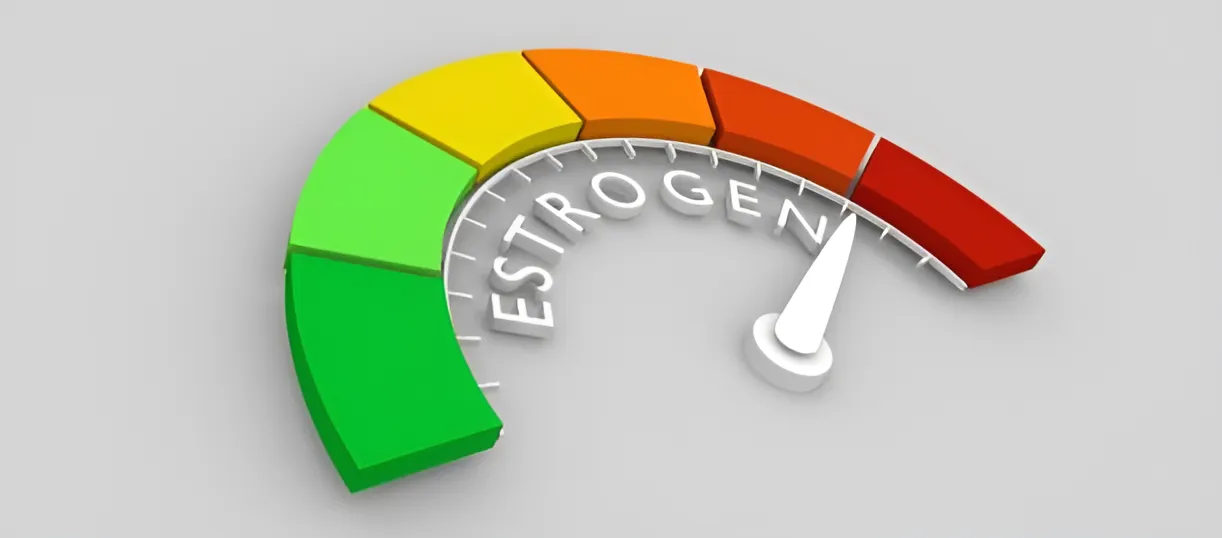Estrogen Dominance & Its Effects on Your Health
Estrogen dominance is a hormonal imbalance characterized by high levels of estrogen relative to progesterone. This condition can have significant effects on overall health and well-being.
Symptoms of estrogen dominance may include weight gain, irregular periods, mood swings, breast tenderness, headaches, and difficulty sleeping. These symptoms arise from the body’s inability to properly metabolize and eliminate excess estrogen.
Estrogen dominance can be caused by a variety of factors, including exposure to environmental estrogens, chronic stress, obesity, and certain medical conditions. Understanding the underlying causes is crucial for developing an effective treatment plan.
Addressing estrogen dominance often involves dietary changes, stress management, and the use of supplements or medications to restore hormonal balance. Working closely with a healthcare provider is recommended to properly diagnose and manage this hormonal imbalance.
Top Natural Ways to Flush Out Excess Estrogen
Maintaining healthy estrogen levels is crucial for overall well-being, especially for women. Excess estrogen can lead to a variety of health issues, from weight gain to increased cancer risk. Fortunately, there are several natural ways to help detox and eliminate excess estrogen from the body.
One effective method is to increase consumption of cruciferous vegetables like broccoli, cauliflower, and kale. These veggies contain indole-3-carbinol, a compound that helps metabolize estrogen. Fiber-rich foods like flaxseeds and chia seeds can also bind to excess estrogen and facilitate its elimination.
Certain herbs and supplements, such as DIM (diindolylmethane) and calcium D-glucarate, have been shown to support healthy estrogen metabolism. Additionally, regular exercise and stress management techniques like yoga and meditation can help the body naturally flush out excess estrogen.
By incorporating these natural strategies into your lifestyle, you can take proactive steps towards regulating your estrogen levels and promoting overall hormonal balance.
Dietary Changes to Support Healthy Estrogen Metabolism
Maintaining a healthy estrogen balance is important for overall well-being. Certain foods have been shown to help support the body’s natural estrogen metabolism. An “anti-estrogen” diet focused on these estrogen-lowering foods can be beneficial.

Some key foods to incorporate include cruciferous vegetables like broccoli, cauliflower, and kale. These are rich in indole-3-carbinol, which helps metabolize estrogen. Flaxseeds are another great option, as they contain lignans that can bind to and block excess estrogen.
Reducing intake of high-fat dairy, red meat, and alcohol can also be helpful, as these tend to elevate estrogen levels. Switching to leaner proteins, healthy fats, and fiber-rich complex carbs is recommended.
By making strategic dietary changes, you can support your body’s natural estrogen regulation and promote overall hormonal balance. Incorporating these estrogen-lowering foods is a simple yet effective way to optimize your health.
Herbs & Supplements to Get Rid Of Excess Estrogen
If you’re dealing with symptoms of estrogen dominance, such as weight gain, mood swings, or irregular periods, certain supplements and herbs may help flush out excess estrogen. Here are some natural options to consider:
- Indole-3-Carbinol (I3C): This compound found in cruciferous vegetables like broccoli and cabbage can help metabolize and eliminate excess estrogen.
- DIM (Diindolylmethane): Another compound from cruciferous veggies, DIM supports healthy estrogen metabolism.
- Calcium D-Glucarate: This supplement inhibits an enzyme that recirculates estrogen, helping to flush it from the body.
- Saw Palmetto: This herb blocks the enzyme that converts testosterone to estrogen, potentially reducing estrogen levels.
- Turmeric: The active compound curcumin in turmeric has anti-inflammatory effects and may help regulate estrogen.
- Black Cohosh: Traditionally used for menopausal symptoms, this herb may also help balance estrogen levels.
Always consult your healthcare provider before starting any new supplements, especially if you have a medical condition. Incorporating these estrogen-lowering nutrients can be a natural way to find relief from hormonal imbalances.
Lifestyle Modifications to Reduce Estrogen Dominance
Estrogen dominance can lead to a variety of unpleasant symptoms, from weight gain to mood swings. Fortunately, there are several lifestyle changes you can make to help bring your estrogen levels back into balance.

One key step is to incorporate regular exercise into your routine. Activities like strength training, high-intensity interval training, and yoga can all help lower estrogen levels by reducing body fat and improving insulin sensitivity.
Stress management is also crucial, as chronic stress can disrupt the delicate hormonal balance. Try incorporating relaxation techniques like meditation, deep breathing, or gentle stretching into your daily life.
It’s also important to minimize your exposure to environmental estrogens, which are found in many common household products. Opt for natural, fragrance-free personal care items, and consider using a water filter to remove endocrine-disrupting chemicals.
By making these lifestyle modifications, you can take an active role in managing your estrogen dominance and improving your overall health and well-being.
In Summary
Combating estrogen dominance requires a holistic approach that includes dietary adjustments and lifestyle modifications. Incorporating estrogen-lowering foods like cruciferous vegetables and flaxseeds can aid in metabolizing excess estrogen. Similarly, supplements such as DIM and calcium D-glucarate can support healthy estrogen metabolism.
Alongside dietary changes, regular exercise and stress management techniques like meditation or yoga can help reduce estrogen levels naturally. It’s also crucial to minimize exposure to environmental estrogens by choosing natural personal care products and filtering water. Consulting with a healthcare professional is advised to develop a comprehensive plan tailored to individual needs and symptoms. By adopting these strategies, individuals can work towards achieving hormonal balance and improving overall well-being.


